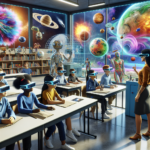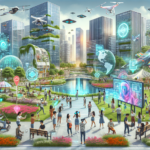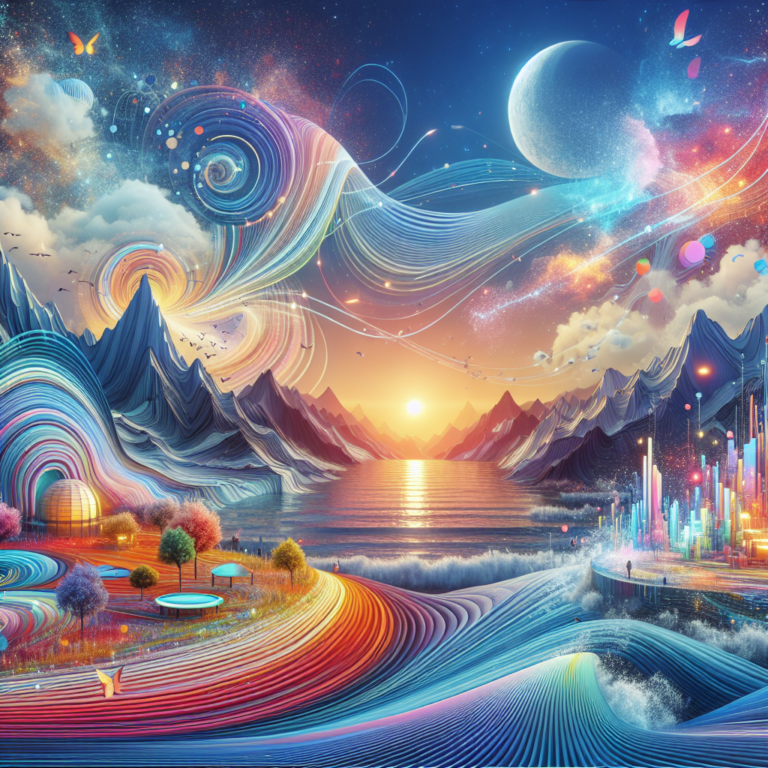Imagine an Emotion-Driven VR Universe: What If AI Could Build Personalized Worlds?
The Intersection of AI, Emotions, and Virtual Reality
As we venture deeper into the realms of technology, the fusion of artificial intelligence (AI) and virtual reality (VR) is creating unprecedented avenues for exploration. Picture stepping into a virtual world curated entirely based on your individual emotions and preferences. What if AI algorithms could transform our feelings into immersive environments, where every virtual experience resonates with who we are at that moment? 🌟
The Magic of Emotion-Centric Personalization
The potential for emotion-centric personalization within VR is indeed magical. Imagine a scenario where, instead of generic landscapes, you find yourself in a breathtaking digital environment tailored to your current mood. This personalization could revolutionize how we engage with virtual spaces, making every experience unique and memorable.
How Do AI Algorithms Understand Emotions?
The foundation of this kind of technology lies in emotion recognition, where AI algorithms leverage various data points to interpret a user’s emotional state. Here are some key components that come into play:
- Biometric Data: Wearable devices and sensors can track heart rates, skin temperature, and even facial expressions to gauge how a user feels.
- Voice Analysis: AI-driven programs can analyze tonal nuances in a person’s voice to determine emotional cues.
- Behavioral Analysis: By observing user interactions and choices over time, AI can learn preferred environments for different moods.
Creating Custom VR Worlds
Once the algorithms recognize emotions, they can begin to craft personalized VR worlds. These could range from tranquil landscapes to vibrant cityscapes, each designed to align with the user’s emotional state. Here’s how this might work:
- Relaxation: If you’re feeling stressed, the algorithm might generate a serene beach with soothing waves and calming sunsets, providing a much-needed escape.
- Joy: On a happier day, imagine jumping into a lively festival atmosphere filled with colorful decorations and cheerful music.
- Inspiration: If you’re seeking motivation, you could be placed in an inspiring landscape featuring majestic mountains or futuristic cities that spark creativity.
Enhancing Mental Health and Well-Being
One of the most profound implications of AI-generated VR worlds is their potential to enhance mental health and well-being. Here’s how:
Therapeutic Environments
Therapists could use customized virtual environments to aid patients in confronting fears or practicing mindfulness. For example:
- Exposure Therapy: Individuals dealing with phobias could safely explore virtual settings that gradually reduce their anxiety.
- Guided Meditation: Calm virtual spaces designed for relaxation could help users meditate effectively, leading to stress reduction.
- Supportive Communities: Users could enter virtual spaces where they feel safe, supported, and understood by others experiencing similar challenges.
Boosting Motivation and Creativity
Personalized VR worlds can equally serve as powerful tools for boosting motivation and creativity. By adapting the environment based on emotional feedback, users are more likely to engage with the content and inspire new ideas.
- Creative Exploration: Artists or writers could be immersed in settings that resonate with their projects, making the creative process more engaging.
- Goal Achievement Spaces: Users looking to build healthy habits may find a virtual gym designed specially to uplift and energize them.
- Networking Opportunities: Tailored virtual events could connect like-minded individuals, igniting collaborations and friendships.
Ethical Considerations and Data Privacy
While the possibilities appear endless, deploying AI algorithms to monitor emotions raises essential ethical concerns, particularly surrounding data privacy. As we journey into this new frontier, it is crucial to consider the following:
- User Consent: Clear frameworks must ensure users have full control over their emotional data and the way it is used.
- Data Security: Safeguards must be in place to protect sensitive emotional information from misuse or breaches.
- Transparency: Users should have insight into how their emotions are interpreted and used to generate personalized experiences.
The Future of Personalized VR Worlds
The advent of AI-driven personalized VR environments could herald a new era, reshaping how we engage with digital content and each other. As we continue to explore the potential of combining emotions with immersive technologies, we can envision:
- Seamless Integration: As AI advances, we can anticipate even more seamless integration of emotional data into VR experiences, creating spontaneous yet enjoyable interactions.
- Shared Experiences: Imagine a future where friends can join each other in their personalized VR worlds, creating shared emotional landscapes that deepen their connections.
- Global Impact: This technology could even provide creative solutions and emotional support in various global contexts, allowing individuals from different cultures to connect empathetically.
Final Thoughts
The question isn’t just “What if?” but rather “When can we experience this remarkable technology?” As we pave the way for innovations that merge AI, VR, and our emotional experiences, the possibilities are indeed limitless. From enhancing well-being to fostering creativity, a new virtual reality awaits us, tailored specifically to understand and celebrate our complex human emotions! 🌈




0 Comments